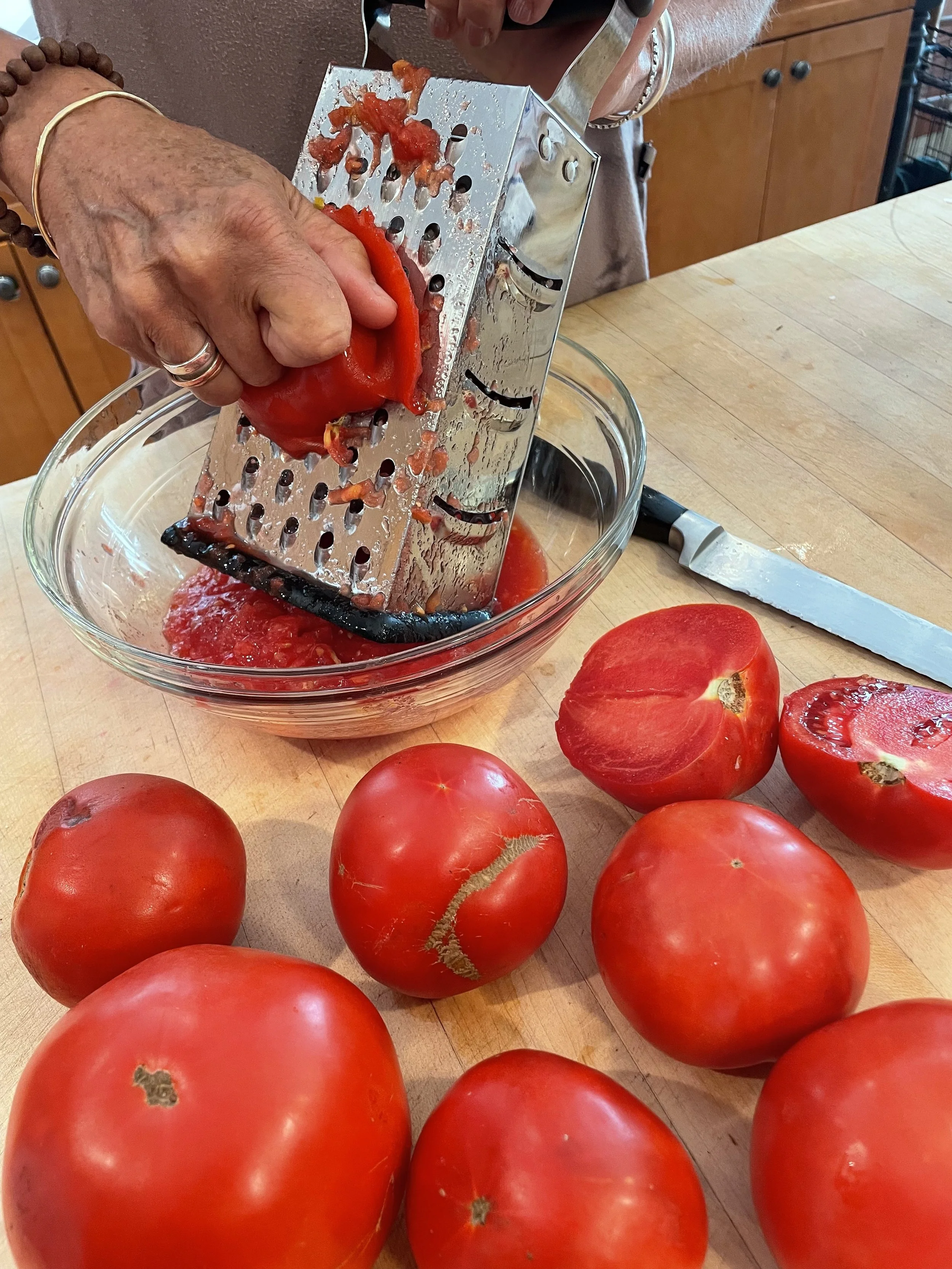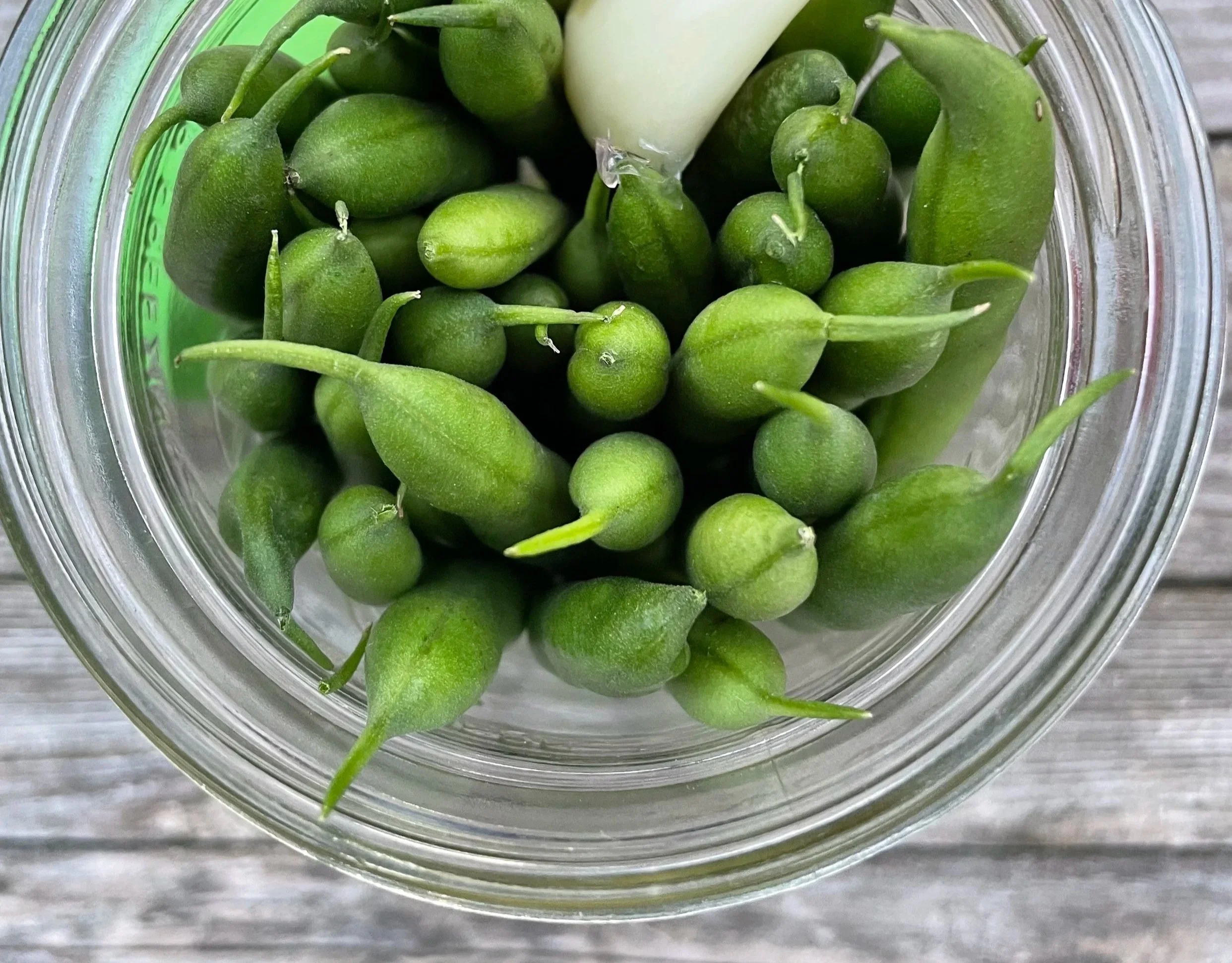How to preserve late-summer produce without canning
Prepping tomatoes for the freezer
Right now, our table is overflowing with tomatoes, corn and peaches — summer’s sweetest gifts. We know, all too soon, we’ll be turning to sturdy root vegetables and thick-skinned squashes, but for now we’re savoring every bite of the late-summer harvest while it lasts. Even our 20-month-old granddaughter is all in, happily shoving tomato after tomato into her mouth with her chubby little fists. It’s a joyful sight — if not a mushy and slobbery one. (And no offense, dear roots and squashes — we love you, too. Just give us a little more time before we’re ready for soups and stews.)
What’s a corn-and-tomato devotee to do when autumn’s hearty tubers start knocking at the door? For me, the answer is to tuck away a few treasures. On a cold, blustery night, I’ll reach for a bag of golden corn to stir into pasta, or bright tomatoes to brighten a pot of soup. It feels like a little gift to my future self — comforting bites of summer, saved and waiting to warm the darker days ahead.
So how to go about it? I’m no homesteader. I don’t have a sprawling garden — just a few pots of tomatoes and an overzealous herb patch. Instead, I make my way to the farmer’s market and fill my bags while the season lasts. I buy enough for our dinners now, and a little extra for when the outdoor markets close and fresh, local produce becomes a warm memory. I’m not stocking the pantry for all winter — that would take more time (and muscle) than I have.
I started tucking food into the freezer back when our kids were little. In just five years, my husband and I had three of them, and suddenly it hit us — by golly, we had to keep them fed. Stashing food away for winter began as a family project, a cheerful way to involve everyone. When the kids were small, there was real excitement in helping out. Over time, of course, that enthusiasm faded. These days it’s just Paul and me, with the occasional help of our granddaughter, Frankie. She’s still young enough to be delighted by a basket of tomatoes and not yet at the stage of rolling her eyes at us. We know that day will come. For now, we’re savoring this sweet in-between time with her — alongside the corn, tomatoes, and blueberries that fill our freezer.
Read on for options and tips on how best to store up some of our harvest favorites. I choose to do this the easy way, without canning. Canning requires lots of time, an enormous amount of counter space and more know-how than I have. If you’re interested in that, there is a note about that in “Quick Overview.”
Frankie snacking on tomatoes in our home kitchen
Choose Fruit and Vegetables for Preserving
Choose a few of everyone’s most favorite things to preserve. By freezing foods at the height of their flavor, they’ll taste better on the other side. Here’s a sampling of our favorites, plus tips on how we do it.
Quick Overview
Preserving food can take many forms. Canning and salt-packing require some science know-how — and can be risky if not done correctly. Personally, I prefer the simplicity of freezing and the tangy punch of quick-pickling. If you’d like to master safe, shelf-stable jarring techniques, reach out to Cornell Cooperative Extension for guidance.
How Long Will It Keep?
Frozen fruits and vegetables will keep for about three months in the freezer. I store ours in the basement, where the door isn’t opened as often, so they stay in better shape. Quick-pickled foods last up to two months in the refrigerator, while fruits preserved in alcohol take about three months to cure but then will keep indefinitely.
Green beans, ready for a quick pickle
Corn
Sweet corn is my favorite harvest to tuck away for later. On chilly days, we pull a bag from the freezer to stir into soup, sprinkle over salads, fold into quesadillas, or just add a burst of sunshine to any meal. To prepare, roast the corn in its husk at 350 degrees for 30 minutes (optional, but it makes shucking much easier). Let the ears cool, then strip away the husks and silk. Break each ear in half, stand it on the flat end, and use a sharp paring knife to slice off the kernels. Transfer the kernels to a freezer-safe bag, press out all the air, and freeze.
Tomatoes
Tomatoes freeze beautifully and need very little prep. Once frozen, they’re ready to become soup, chili, sauce, or just about any spiced-up dish you can dream of. I prefer to freeze them raw: simply slice each tomato in half and grate the flesh on the large holes of a box grater, leaving the skins behind for compost. Pour the pulp into freezer bags, press out the air and freeze.
Green Beans
Fresh, crisp green beans are perfect for quick pickling. Here’s how I do it: pack glass jars with green beans, a garlic clove, and any herbs you have on hand; thyme and dill are my favorites. In a separate container, mix equal parts boiling water and vinegar, and stir in a teaspoon each of sugar and kosher salt per 8-ounce jar. Pour the hot liquid over the beans, making sure they’re fully submerged — add a little extra vinegar if you need a top off — then screw on the lids. Let the jars cool, then refrigerate for up to two months. You can use this same method to quick-pickle onions, cucumbers, zucchini, and nearly any other vegetable.
Roast corn for easier shucking, then freeze it for up to 3 months.
Peaches
Boozy peaches — and any fruit soaked in spirits — are a grown-up treat. Soft, sweet and infused with brandy, rum, or whatever you have on hand, they make indulgence irresistibly fun. Fill a clean glass jar with peeled, sliced peaches and a cinnamon stick (or cloves, or star anise), then pour in enough alcohol to cover the fruit. Seal tightly and tuck the jar in the back of the cupboard. Your decadent reward will be ready in three months, and keeps indefinitely. Serve the fruit over ice cream, pound cake, or cookies — or enjoy it straight from the jar. On a cold night, it’s pure warmth and joy from the inside out. Be careful, though: these treats are strong!




